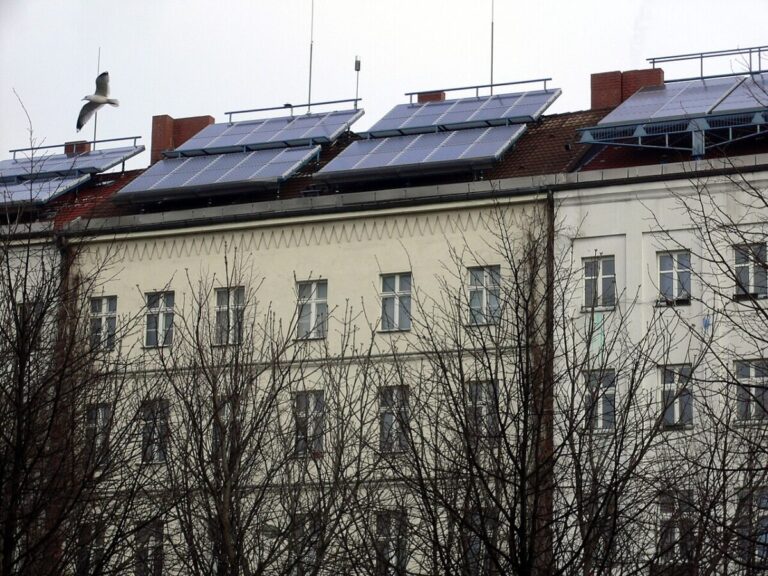New research from Germany shows that the optimal size of residential heat pumps in renovation buildings can be achieved without taking into account their potential connection to a PV system and the associated control strategies. An optimal sizing strategy, on the other hand, should not neglect electricity price assumptions.
Researchers from Germany’s RWTH University of Aachen have investigated the impact of rooftop PV, controls and price assumptions on the design of heat pumps (HPs) and thermal energy storage for renovation buildings and found that solar photovoltaics and control strategies have little influence on the optimal design from HP. .
“Our work provides a comprehensive analysis of all design sizes using a state-of-the-art rule-based control and detailed dynamic simulation to identify potential interdependencies in the optimal design of PV-assisted heat pump systems,” says the corresponding author of the study, Fabian Wüllhorst, explains pv magazine.
“Our research focused on well-insulated building envelopes, which are comparable to new construction. However, new buildings in Germany typically use underfloor heating systems with greater inertia than the radiators we studied. This additional inertia would likely further reduce the need for space heat storage,” he further explained. “Another point to take into account is the demand for domestic hot water (DHW) and the storage size, which were kept constant in our study. Although buildings with a high demand for hot water will benefit most from a PV-supported heat pump, hygiene aspects, especially with regard to legionella, must be taken into account when sizing the hot water storage.”
The scientists specified prior to their work that it was not clear to what extent rooftop PV, the use of a supervisory control strategy and pricing assumptions influence the optimal design of an HP, and said they applied pre-screening to identify relevant model input combinations. with a potentially major influence on the optimal design.
“By applying a simulation-based design optimization with a detailed building energy system model, we optimize three cases: no photovoltaics, no supervisory control and a state-of-the-art supervisory control,” they further explained, noting that their analysis focused on the renovation of residential buildings in Germany, where the use of an air-water WP, an electric heater with serial connection, a parallel connected thermal energy storage, a separate storage for domestic hot water (DHW) with a parallel connected internal heat exchanger.
“The system is completed by PV, the building envelope and user profiles for hot water and household electricity,” says the research group.
Using the open-source Modelica software, the academics modeled components, controls and the building envelope. The modeling is based on a typical profile of a four-person single-family home with an annual consumption of 2,800 kW. Six typical orientations of PV installations (east, south, west, north, south-north and east-west) were also taken into account, as well as parameters such as temperatures, heat flow rates and electricity flows.
“In all cases we assume 100% roof surface use. While this is not always practical, it maximizes the possible impact on the optimal design,” she added. “We reason that if 100% roof area use does not affect the optimal design, then a lower percentage of roof area use will not either.”
Their analysis showed that PV and control strategies have a “small” influence on the optimal HP size, which justifies the neglect of PV in current guidelines, although new advanced control strategies should be considered as the optimal design of future HPs. “PV has little effect on the cost-optimal storage size for space heating, only at large HP and higher electricity price assumptions,” the group pointed out.
The analysis also showed that electricity price assumptions are a key factor influencing the optimal HP size. “With higher operating costs, larger horsepower should be installed to reduce the consumption of electric heaters,” the scientists emphasized.
“The fact that PV can be neglected when sizing heat pumps is an advantage, because the findings support a simple design of PV-assisted heat pumps,” says Wüllhorst. “Although heat pumps influence self-consumption and therefore the optimal design of the PV system, installers only need to consider the interdependencies when sizing PV, and not the heat pump and storage.”
They introduced their findings in the study “Heat pump and thermal energy storage: influences of photovoltaic energy, the control strategy and price assumptions on the optimal designN”, published in Renewable energy. “Although the findings can already guide practitioners in sizing HP and storage with PV, future studies should develop explicit design rules that provide the optimal design for different electricity price assumptions and model inputs,” they said, pointing to future research directions.
This content is copyrighted and may not be reused. If you would like to collaborate with us and reuse some of our content, please contact: editors@pv-magazine.com.


